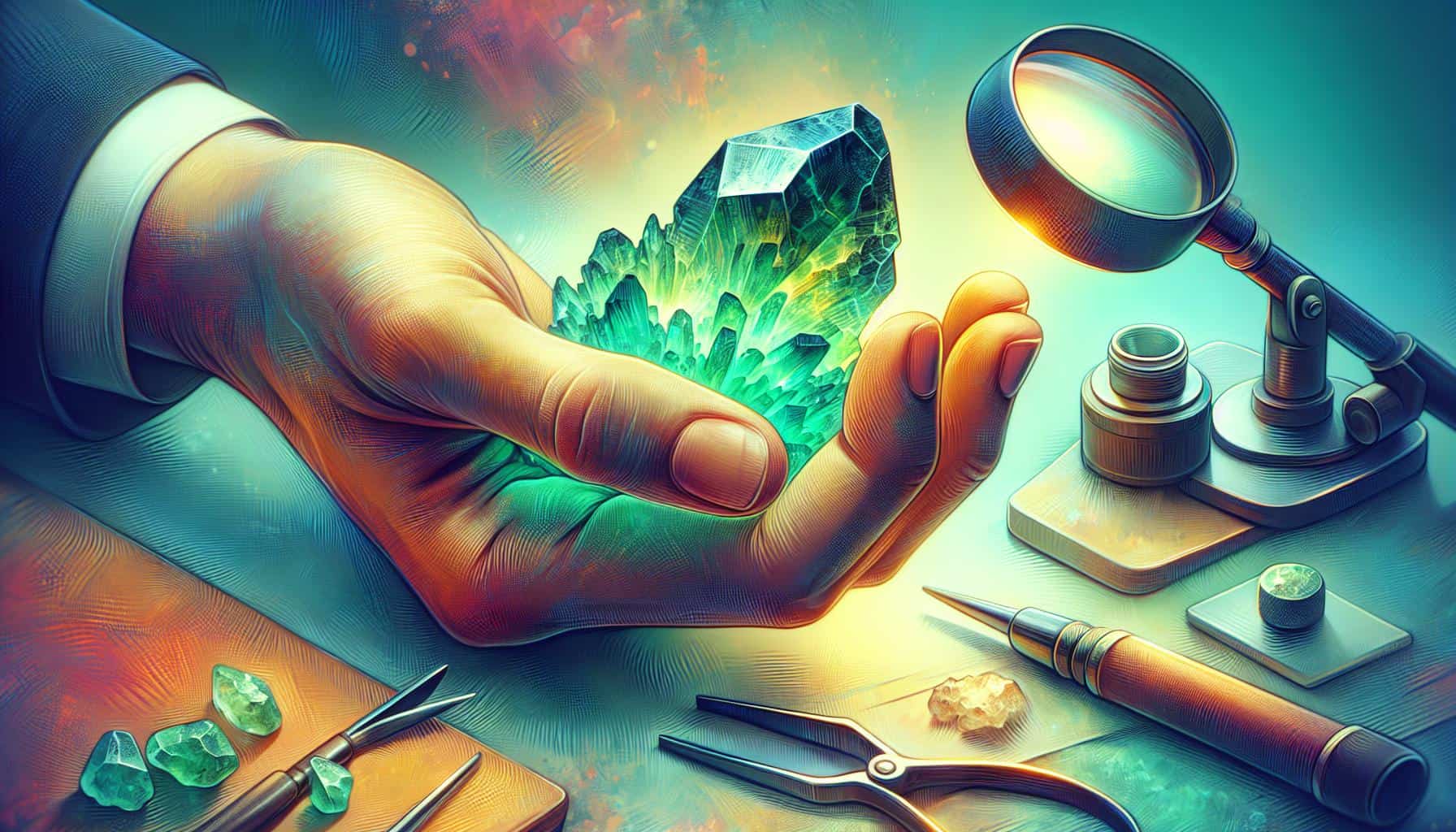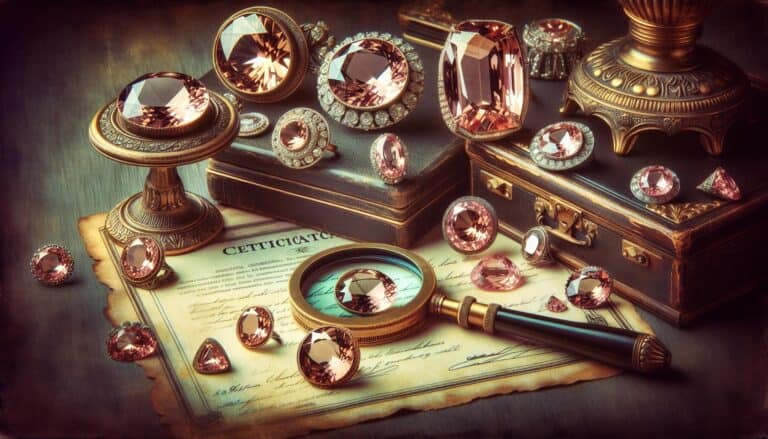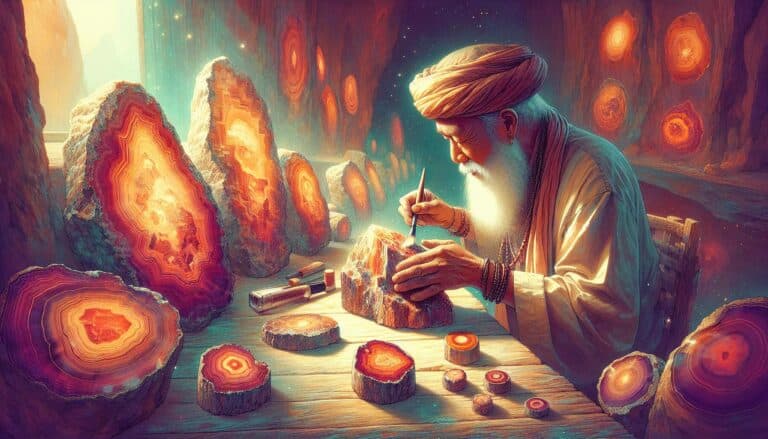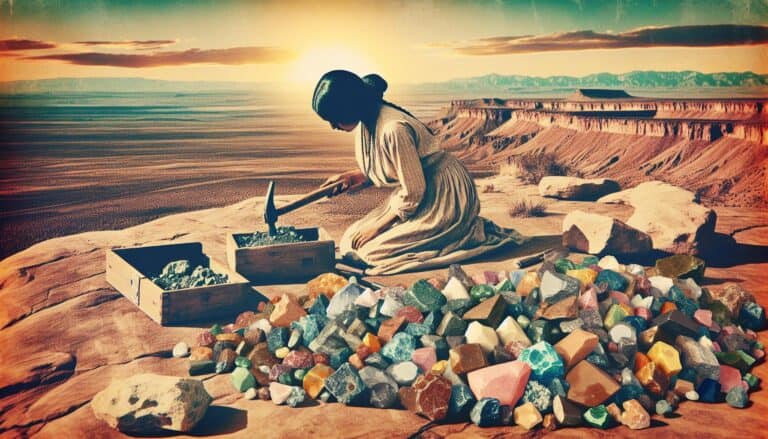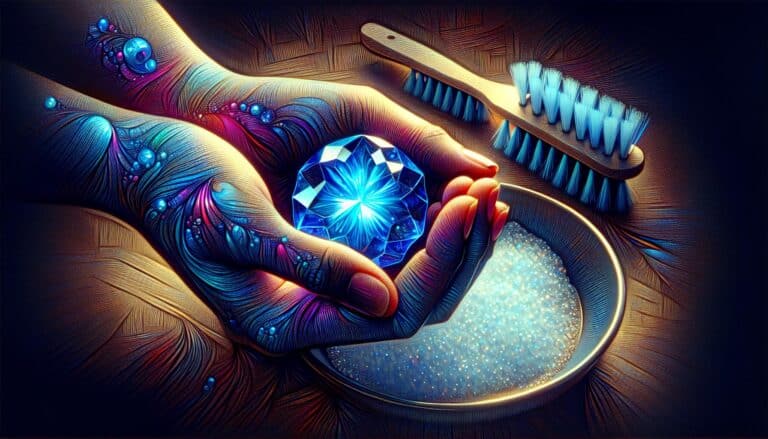Ever stumbled upon a mysterious green stone and wondered if it’s the real deal—moldavite?
You’re not alone! This tantalizing tektite, born from a meteorite’s fiery crash over 15 million years ago, has fascinated collectors and enthusiasts alike.
But with fakes flooding the market, knowing how to spot genuine moldavite is crucial.
Olive green, glassy glow, etched by time, that’s moldavite, you know? White streak it leaves behind, not magnetic to your mind. Hardness 5.5 to 6, single light path, Czech soul it won’t miss.
How to Identify moldavite Through Testing
Visual Inspection
Begin with a careful examination of the stone’s appearance. Authentic moldavite has distinctive characteristics that you can spot. Look for a deep olive to forest green color and a glassy, translucent texture. Check for distinct natural etchings and small bubbles trapped within the stone, hallmarks of true moldavite. See if there is a rough, sculpted look which is typical due to its natural formation from a meteorite impact.
The Streak Test
Perform a streak test using a piece of unglazed ceramic. Genuine moldavite will leave a white streak when dragged across. This simple technique is an initial step for authenticity, yet it’s not foolproof. Always combine this test with other methods for an accurate determination.
Magnet Test
Conduct a magnet test by bringing a magnet close to the stone. Moldavite is non-magnetic, so if the stone is attracted to the magnet, be wary. This could indicate that what you’re holding is not a real moldavite but possibly a man-made imitation or another mineral altogether.
Hardness Test
Employ the Mohs scale of mineral hardness to assess the stone. Moldavite falls between 5.5 and 6 on the scale. You can test this by scratching the stone with objects of known hardness; if it’s easily scratched by materials of lesser hardness, question its authenticity.
Birefringence Test
Use a birefringence test to check if the stone splits a single ray of light into two paths. Since moldavite is amorphous, it shouldn’t exhibit birefringence. If your sample does, it’s likely not genuine.
Checking The Diaphaneity
Observe the diaphaneity, or the degree to which light passes through the moldavite. True moldavite allows light to pass through but not entirely clear, offering a mossy, cloudy appearance.
Single or Double Refraction
Note that genuine moldavite should display single refraction, being amorphous. If, under examination, it shows double refraction, then it’s not true moldavite but possibly another mineral masquerading as moldavite.
Refractive Index Test
With a refractometer, measure the stone’s refractive index. Authentic moldavite has an index typically between 1.48 and 1.54. Any substantial deviation could suggest a counterfeit.
| Refractive Index Range | Implication |
|---|---|
| 1.48 – 1.54 | Authentic |
| Below 1.48 or over 1.54 | Suspect |
Finding The Specific Gravity
Determine the specific gravity of the stone. Real moldavite will have a specific gravity in the range of 2.32 to 2.38. If the values fall outside this range, further investigation is warranted.
| Specific Gravity Range | Conclusion |
|---|---|
| 2.32 – 2.38 | Genuine |
| Not within 2.32 – 2.38 | Investigate |
Identifying Moldavites in the Field
When searching for moldavite in the field, focus on the geographical region. Moldavite is mainly found in the Czech Republic, so verify the stone’s provenance. Overlying sediment and the characteristic pitted texture can be indicators of a true find in nature.
Recognizing Potential Moldavite Rocks
Assess potential moldavite rocks by their unique features. Genuine stones tend to be light for their size and have a melted appearance. When held up to the light, the lechatelierite inclusions, a type of pure silica, should become apparent, distinguishing them from common green glass.
Physical Characteristics of moldavites
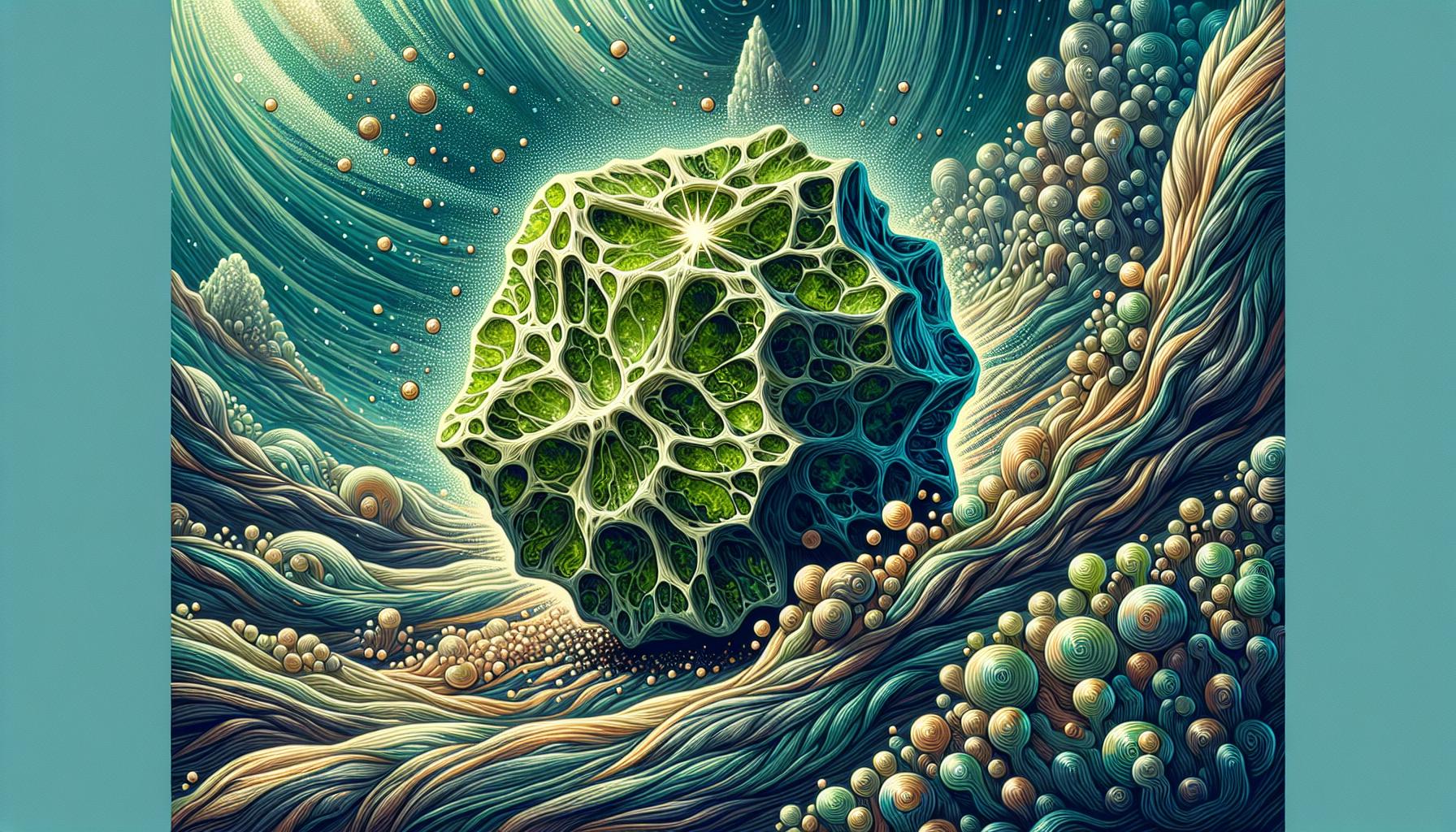
When you’re on the hunt for authentic moldavite, familiarizing yourself with its physical characteristics is key. Genuine moldavite boasts a distinctive green color, often described as olive to bottle green. However, this hue can vary slightly based on impurities present in the stone or the angle at which light strikes it.
One of the tell-tale signs of real moldavite is its textured surface, featuring unique etchings and sculptural patterns. These grooves and indentations are the result of natural etching processes that took place over millions of years. As a tektite formed by a meteorite’s impact, true moldavite also contains tiny, elongated bubbles. These bubbles are trapped during the rapid cooling of the molten material ejected into the air.
Keep in mind that moldavite’s hardness on the Mohs scale generally falls between 5.5 and 7, making it relatively durable but still prone to scratches from harder substances. The density of moldavite, often referred to as its specific gravity, ranges from 2.32 to 2.38 g/cm³. Here’s a quick reference:
| Property | Value |
|---|---|
| Color | Olive to bottle green |
| Surface Texture | Sculptural etchings |
| Bubbles | Tiny, elongated |
| Hardness (Mohs) | 5.5 to 7 |
| Specific Gravity | 2.32 to 2.38 g/cm³ |
As you examine potential specimens with these facts in hand, you’ll be better equipped to differentiate genuine moldavite from impostors. Remember that location matters too; authentic pieces are found only in certain areas of Central Europe, primarily in the Czech Republic.
Pay attention to the combination of physical traits and don’t rely on a single characteristic. Authentic moldavite’s texture and patterns often defy replication, so look for natural imperfections and irregularities that suggest a genuine article.
How Are moldavite Formed?
Moldavite’s origin story is as captivating as the stone itself. Around 15 million years ago, an enormous meteorite collided with Earth in the region of the Ries crater in Germany. This impact led to the formation of moldavite through a process known as vitrification, where the intense heat and pressure transformed the surrounding rock into a molten glass. Eventually, this green-toned tektite was scattered across what is now the Czech Republic, and to a lesser extent, parts of Austria and Germany.
When you’re identifying genuine moldavite, it’s crucial to appreciate these geological circumstances which are singular to moldavite’s creation. The unique formation process results in characteristic features, such as:
- Lechatelierite inclusions (tiny threads of glass)
- A distinctive scarred and sculpted surface texture
- A varying color palette ranging from olive green to a deep forest green
These characteristics are intertwined with moldavite’s geologic history and are tell-tale signs of authenticity. Understanding how moldavite is formed not only enriches your knowledge but also sharpens your ability to determine if a specimen is the real deal. Remember that the presence of these key features is a testament to moldavite’s violent yet awe-inspiring birth.
Preparation for moldavite Hunting
Before you venture out in search of genuine moldavite, it’s crucial to equip yourself with the right tools and knowledge to ensure a safe and successful hunting experience.
Gathering the Right Tools
To begin your moldavite hunting adventure, you’ll need a few essential tools:
- Loupe or Magnifying Glass: A high-quality loupe will enable you to inspect potential finds closely for the unique characteristics of genuine moldavite.
- Geologist’s Hammer: This allows you to break open rock formations safely where moldavite may be embedded.
- Field Guide: Carrying a field guide on rocks and minerals specific to the Central European region helps identify moldavite in the field.
- GPS Device or Detailed Map: These are indispensable for navigating the specific regions known for moldavite deposits, such as the Czech Republic.
Make sure your toolkit also includes bags or containers to safely store any moldavite you uncover.
Safety Considerations
Safety should be your top priority when on a moldavite hunt:
- Wear Protective Gear: Durable gloves protect your hands, and safety glasses shield your eyes from any flying debris while using the geologist’s hammer.
- Check Weather Conditions: Before heading out, check the forecast. Inclement weather can make terrain treacherous and hunting unproductive.
- Familiarize Yourself with Local Regulations: Some areas may have restrictions or require permits for collecting. It’s essential to adhere to these regulations to avoid fines or legal trouble.
- Stay Hydrated and Bring Nutrition: Always pack enough water and food to sustain you throughout your hunt.
Remember, proper preparation is the key to finding authentic moldavite and differentiating it from imitations while ensuring your safety during the hunt.
Handling and Care of Found moldavites

Once you’ve successfully identified and collected moldavite, it’s essential to handle your find with care. Proper maintenance not only preserves the beauty and integrity of your moldavite but also safeguards its value.
Cleaning Moldavites
After a day’s hunt, your moldavite might be coated with dirt and debris. Cleaning is the first step in its care:
- Start with water: Rinse your moldavite in lukewarm water to remove any loose sediment.
- Gentle brushing: With a soft-bristle brush, like a toothbrush, gently scrub the surface to dislodge embedded particles.
- Mild soap is your friend: If water alone doesn’t do the trick, add a drop of mild dish soap to the mix and continue scrubbing softly.
- Rinse thoroughly: Make sure all soap is washed off to avoid residue.
- Pat dry: Dry your moldavite with a lint-free cloth to prevent any water spots from forming.
Remember, moldavite is relatively fragile compared to other gemstones, so avoid using harsh chemicals or ultrasonic cleaners that could damage its unique texture.
Storing Moldavites
Proper storage is as important as the cleaning process. Consider the following tips to keep your moldavite safe:
- Separate compartments: Store each piece in a separate compartment or a soft pouch to prevent scratching.
- Avoid extreme conditions: Moldavite can be sensitive to high temperatures and sudden changes in environment, so keep it away from direct sunlight and in a stable, moderate climate.
- Display cases: If displaying, ensure your case provides adequate protection against dust and other environmental factors.
By storing your moldavite correctly, you ensure that its natural beauty and value are maintained for years to come. Whether you’re a seasoned collector or a curious newcomer, taking the time to clean and store your moldavite properly will deepen your appreciation for this extraordinary stone.
Conclusion: Confirming Moldavite Real
Armed with the right knowledge and tools, you’re now equipped to identify genuine moldavite.
Remember to pay close attention to the stone’s unique characteristics and use the tests discussed to confirm authenticity. When out in the field, stay safe and prepared—your attention to detail and adherence to safety will make all the difference. And once you’ve found that special piece, proper care will ensure your moldavite retains its natural allure for years to come.
Happy hunting and treasure your cosmic green gem with confidence!

